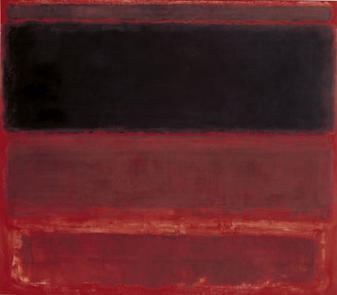...[T]ragedy does not sit well with commerce: Rothko enjoys his fame and commissions but despises the capitalists who pay him as well as the privileged bourgeoisie who dine at the Four Seasons. He rationalizes putting his paintings in the Four Seasons as an attack on consumerist values. Simultaneously, while Ken enthuses about the new generation of pop-artists...
Thursday, January 12, 2012
John Logan's RED: a play about Mark Rothko Reviewed
In my fifth outing as a reviewer for The Arts Fuse I review SpeakEasy Stage Company's production of John Logan's Red a two-hander about Mark Rothko during the 1950s when he was working on his mural commission for the Four Seasons restaurant at the Seagram Building in Midtown Manhattan. Directed by David R. Gammons, and featuring Thomas Derrah and Karl Baker Olsen.
Posted by
Ian Thal
at
2:55 PM
![]()
![]()
Labels: David R. Gammons, John Logan, Karl Baker Olsen, Mark Rothko, SpeakEasy Stage Company, The Arts Fuse, Thomas Derrah
Subscribe to:
Post Comments (Atom)




3 comments:
" For decades in art circles it was either a rumour or a joke, but now it is confirmed as a fact. The Central Intelligence Agency used American modern art - including the works of such artists as Jackson Pollock, Robert Motherwell, Willem de Kooning and Mark Rothko - as a weapon in the Cold War. In the manner of a Renaissance prince - except that it acted secretly - the CIA fostered and promoted American Abstract Expressionist painting around the world for more than 20 years.
The connection is improbable. This was a period, in the 1950s and 1960s, when the great majority of Americans disliked or even despised modern art - President Truman summed up the popular view when he said: "If that's art, then I'm a Hottentot." As for the artists themselves, many were ex- com- munists barely acceptable in the America of the McCarthyite era, and certainly not the sort of people normally likely to receive US government backing.
Why did the CIA support them? Because in the propaganda war with the Soviet Union, this new artistic movement could be held up as proof of the creativity, the intellectual freedom, and the cultural power of the US. Russian art, strapped into the communist ideological straitjacket, could not compete.
The existence of this policy, rumoured and disputed for many years, has now been confirmed for the first time by former CIA officials. Unknown to the artists, the new American art was secretly promoted under a policy known as the "long leash" - arrangements similar in some ways to the indirect CIA backing of the journal Encounter, edited by Stephen Spender..." more here: http://www.independent.co.uk/news/world/modern-art-was-cia-weapon-1578808.html
Hi Norah.
Yes, I've read the about how modern art was used as a propaganda weapon by the CIA during the Cold War before. It doesn't seem improbable to me. Even during the civil rights struggles on the domestic front, African American jazz musicians were touring the world as good will ambassadors of the U.S. State Department. Despite the attitudes of the vast majority of Americans regarding either bebop or abstract expressionism, it doesn't seem unreasonable that at least some genuine fans of these art forms were also happened to shape U.S. foreign policy at the time.
Most of the prominent figures in American painting at the time were themselves either Jewish immigrants or first-generation Jewish-Americans, and whatever misgivings they may have had about American society, communist style totalitarianism was a fairly stark contrast to the (albeit flawed) liberalism with which they had grown up.
After all, as shown in Red, Rothko was not only free to be an iconoclastic on the canvas, but to say "no" to the powerful capitalists of his age, while not working in the approved socialist-realist style in a Warsaw Pact country could get one's work banned, and result in other punishments.
Also note that in tandem with my review The Arts Fuse has also posted Tim Jackson's interview with Thomas Derrah about playing Mark Rothko.
Post a Comment